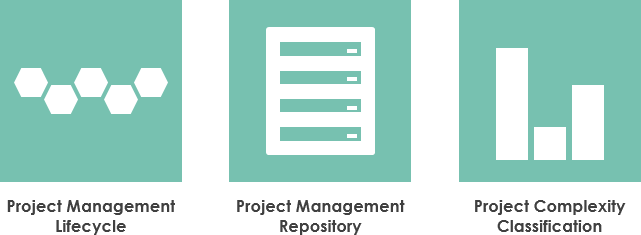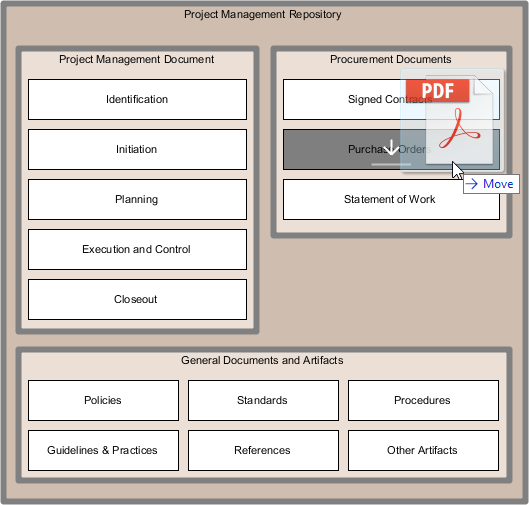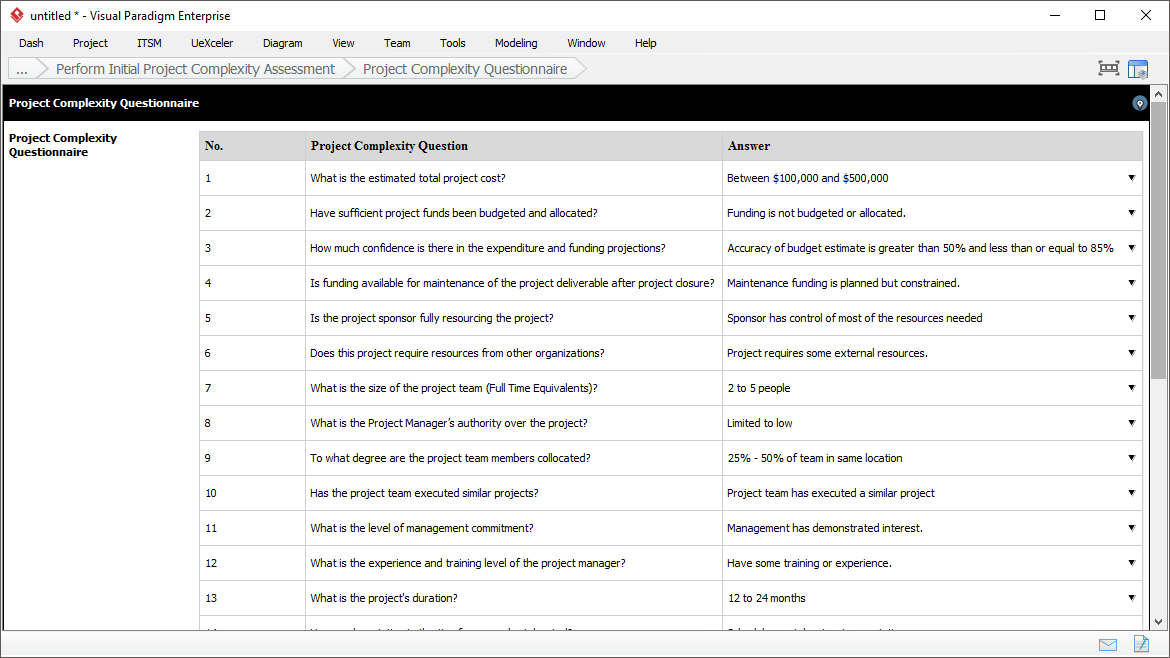What is IT Project Management Framework?
A framework is a set of tools put together to help you accomplish your job faster and better. The IT Project Management Framework is a collection of concepts, methods and tools that helps project teams to achieve the followings.
- Manage project lifecycle: To walk the team through the journey of an IT project, from project identification, to project initiation, planning, execution, and closeout, phase-by-phase, step-by-step. Activities will be performed throughout the lifecycle to address the management needs of the project.
- Document project: Documents are produced as outputs of the lifecycle activities. The framework provides the guidelines, templates and tools in developing these documents.
- Manage project documents and artifacts: The framework comes with a conceptual repository that acts as a holding area of project documents and assets, providing the team a centralized place for document retrieval.
The three major components
There are three components that shape and support the IT Project Management Framework. They are: (1) Project Management Lifecycle, (2) Project Management Repository, and (3) Project Complexity Classification.

Project Management Lifecycle
The Project Management Lifecycle, which defines an IT project's life cycle as five distinct phases. Each IT project progresses through the five phases, completing the activities required, and producing a set of related document outputs.

Here is a quick walkthrough of the five phases.
- The first phase is the Identification phase. Its primary objective is to determine whether a proposed IT project should be undertaken. Activities of this phase involve identifying solutions and providing recommendation based on the analysis of cost and benefits for each possible solution. By the end of this phase, a project proposal will be developed. A project sponsor evaluates it and determines if the project should be undertaken. Projects receiving formal sponsorship progress to the next phase of the life cycle.
- The Initiation phase begins with the performing organization appoints a Project Manager to lead the project team and manage the project. The project manager defines the project scope and develop the project charter, which will be approved by approving authority and project sponsor. The signatures formally empower the project manager to expend resources on the project and begin the Planning phase of the project.
- In the Planning phase, various planning activities will be conducted, which includes the planning of work, schedule, budget, resources, staffing need, and etc. Those planning activities are performed to ensure the project will be completed on time and within budget.
- In the Execution and Control phase, the project team completes the development activities identified in the planning phase to produce the project deliverables required. This phase ends by having the deliverables accepted by the users and the project sponsor.
- Phase five, the Closeout phase. This phase involves discussing and documenting the lessons learned from the project, as well as to plan and conduct transferal activities.
Project Management Repository
Throughout the Project Management Lifecycle, activities will be performed, the information collected will be organized and output as documents. The Project Management Repository is a holding area for these documents and other resources produced and required during project life cycle. It provides a common place for project team to locate deliverables and re-usable assets.
The Project Management Repository comprises a number of containers for holding different kinds of project documents and artifacts, known as drawers. For instances there are five drawers to hold the documents produced by the five phases of the Project Management Lifecycle.

There are also drawers that stores the different kinds of procurement documents such as contracts, purchase orders and any statement of work. Resources that help the team in executing their duties as required can be put under drawers like Policies, Standards, Procedures, and etc.
Project Complexity Classification
There is no one-size-fit-all when it comes to project management. Having a clear understanding of your project's complexity helps determines what activities and deliverables are required for managing the project.
The IT Project Management Framework provides a Project Complexity Questionnaire that helps you determine your project's complexity. By answering a set of complexity questions, a complexity score will be obtained, which determines the classification of project complexity.



